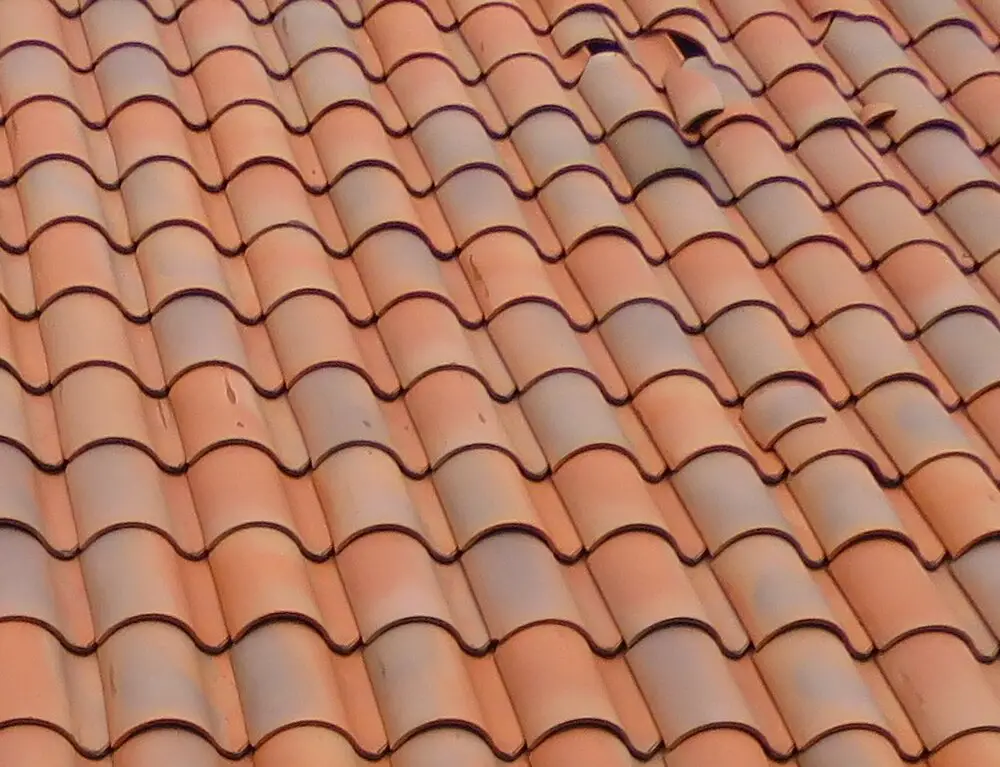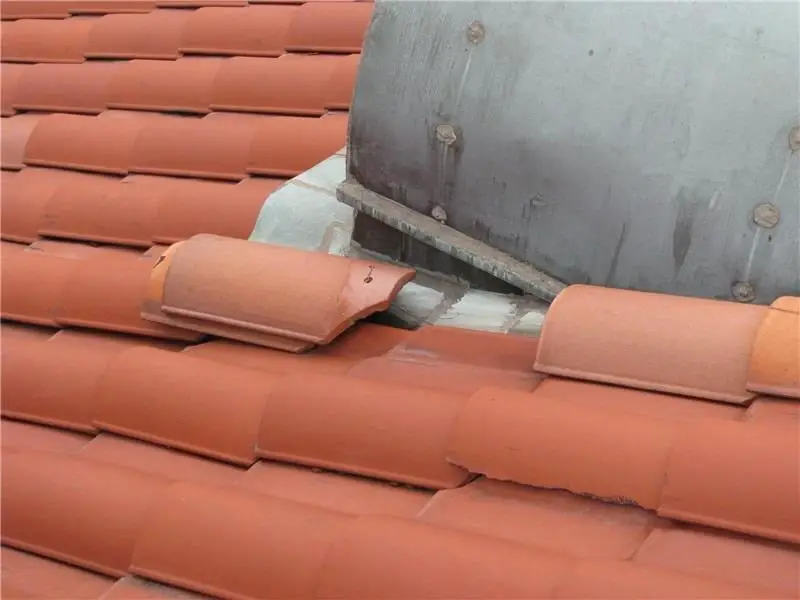How to Repair a Tile Roof
A DIY Guide to Simple Repairs
By James Galimidi, Owner at JJ Quality Builders Of The Palm Beaches, Palm Beach County, Florida
Reviewed by Jack Gray, Roof Online Editor
Published July 30, 2020 • Last updated October 24, 2022
Visit the JJ Quality Builders Website
Table of Contents
- What You Will Need to Repair a Tile Roof
- Tile Roof Repair Introduction
- Identifying Your Tile Roof Problem
- Safety and Proper Preparation: Before You Repair a Tile Roof
- Estimating the Cost to Repair a Tile Roof
- Do-It-Yourself Tile Roof Repairs
- Fast Fix for a Tile Roof Leak
- More Tile Roof Repair Tips
- Conclusion
- Related Articles
What You Will Need to Repair a Tile Roof
Tools
Caulk Gun See on Amazon
Flat Pry Bar See on Amazon
Hammer See on Amazon
Trowel See on Amazon
Wire Brush See on Amazon
Materials
Plastic Roof Cement, Trowel-Applied See on Amazon or
Plastic Roof Cement, Caulk Gun-Applied See on Amazon
Sheet Metal Flashing See on Amazon
Replacement Tiles
Tile Roof Repair Introduction
A well-designed roof made with robust materials not only adds to the splendor of the structure but also provides superior protection against the elements.
Despite being relatively expensive and heavy, tile roofs are popular because of their appearance and durability. People invest in tile roofs because they can last a hundred years or more.

Fired clay, terra cotta, and molded, tinted concrete are standard tile materials. Tile roofs made with these earth minerals can survive storms, high winds, and even fire. They are energy-efficient, resistant to decay and insect damage, and provide a low maintenance roof.
But as with every other material thing, damage can still occur: damage from wind, debris falling on the roof, freezing weather, the stresses of snow or water, the heat of the sun, and even accidental damage caused by humans stepping on them or hitting them while working on or near them.
The damage mostly ends up affecting individual tiles. Often the damaged tiles do not need to be replaced, and some minor adjustment and repair will be enough.
How much it will cost to repair a tile roof will depend on the type of damage and the number of damaged tiles, and also which company you hire for the job. However, if the issue is not too complicated, some basic knowledge and a steady ladder can help you solve the problem all by yourself!
Identifying Your Tile Roof Problem
Tile roofs should be visually inspected every three months to check for cracks and other damage.
Gutters should be cleaned out monthly so that no debris can accumulate. If a problem is found, a fast response is needed since damaged tiles or worn out underlayment can cause leaks which lead to ever-increasing water damage to the building. More damage will cost more to repair.
To solve any problem, the first step is to properly identify the damage and the exact points where the repairs need to be done.
If you are determined to repair a tile roof without professional help, some basic knowledge is a must. There could be several reasons for damaged tiles, and issues can result from problems with other parts of the roof.
Common issues with tile roofs that need attention are:
- Tiles with minor cracks or holes
- Broken tiles
- Build-up of debris in the roof valley
- Defects in the underlayment
Safety and Proper Preparation: Before You Repair a Tile Roof
Before getting on the roof, you should have leather gloves and protective safety glasses. A stable, properly set up ladder is critical to safely accessing the roof.
See here for guidelines on ladder safety. When working on roofs, a personal fall arrest system should be used for protection against falling (see here for information on personal fall arrest systems).
More roof safety information can be found here.
While working on damaged tiles one should be careful not to damage any other parts of the roof.
The tools and materials that you will be using should be kept within reach. These items may include a wire brush, nails, wet saw, hammer, mortar, crowbar, glue, roofing cement or plaster, caulk and caulk gun, waterproof membrane, roofing felt, and tile roof sealer or terracotta color.
If a tile needs to be replaced, it should be replaced with the exact same type of tile. If you don’t already have spare matching tiles, they should be available from the original supplier or manufacturer. Trying to force another type of tile to fit in might cause more damage.
Estimating the Cost to Repair a Tile Roof
A DIY tile roof repair can save you money on hiring a roofer. But you should also have an idea of what the tools and materials will cost.
If you’re not sure of this, take some pictures, measure the roof and the damaged areas, and go to the local home improvement or hardware store and ask them to help with an estimate.
Cost factors will include the extent of the damage (amount of material needed) as well as the brands and quality of the materials you want to use.
If a repair job is not correctly projected and estimated, you will often end up spending more than you need to.
Do-It-Yourself Tile Roof Repairs
Different issues require different solutions. After identifying the problem, and using proper precaution and the necessary tools, you can repair a tile roof in the following ways without professional help:
Small Cracks or Holes
When there are small cracks and holes in tiles, plastic roofing cement can be used to fill in the defects.
- First, clean the damaged area with a wire brush.
- Use plastic roofing cement to fill a hole or to seal or join the crack.
- With a trowel, smooth the surface.
Cracked or Broken Roof Tile
When a roof tile is broken and missing a piece, or a crack is so big that a piece of the tile becomes loose, then the tile needs to be replaced.
- Use a flat pry bar to carefully lift up the tile (or tiles) just above the cracked or broken one. Be careful not to damage them by lifting them too far. Prop them up with blocks of wood.
- Next use the flat pry bar to lift out the faulty tile. If it doesn’t come out, insert a piece of wood beneath the tile to protect the tile below it. Use a hammer or the flat bar to carefully break the tile and remove the pieces. Using the flat bar, remove the nails that held the damaged tile if you can. If you can’t, use the flat bar and a hammer to drive the nails down into the wood battens or the roof sheathing.
- At this point, apply a bed of roofing cement to the area that was covered by the tile that’s being replaced, and slide in the new tile. Nails are not required for the replacement tile; the cement or adhesive should be good enough to hold it.
- Now gently lower the raised tiles back into place.
If a cracked roof tile cannot be replaced right away, a temporary repair can be made by cutting a piece of roofing felt, waterproof membrane, or flashing strip to size and sticking it over the crack with roof adhesive, completely covering the damaged area.

Tile Roof Leaks
Leaks are a rather complicated problem. To solve it, you need to identify and repair the source of the leak.
To identify the source of the leak, you should perform a visual inspection of the roof surface.
Before getting up on the roof, note that wet spots, watermarks, stains, or discolorations on the underside of the roof may be seen in the attic.
With the attic light turned off, daylight may even be seen through the hole. This will give you an idea as to where to look on the roof.
If you still can’t find it, run water onto the roof with a hose, and water from the leak should appear in the attic.
If you can identify a hole as the source of the leak, push a nail or a piece of thin wire through the hole from below to mark it for when you are on the roof.
- Use a flat pry bar to lift up the tiles around the leak.
- Using roofing cement, fill the hole.
- Replace the tile if broken or cracked.
- If there is long-term water damage to the supporting roof structure that has caused sagging, the wood sheathing and rafters underneath the roof tiles probably need to be fixed first. Contact a roofing contractor.
Fast Fix for a Tile Roof Leak
A roof leak due to a hole in the tile can sometimes be temporarily fixed with sheet metal flashing, commonly available at hardware stores.
- Take a 12-by-12-inch piece of galvanized sheet metal flashing.
- Lift the damaged tile with one hand and cover the hole by pushing the metal flashing piece up under the tile. Set the piece of metal in flashing cement to hold it in place.
More Tile Roof Repair Tips
- If you know there’s a problem with your roof, but you’re not exactly sure what needs to be done to fix it, you can call a professional roofer for an inspection and detailed quote, free of charge. The roofer should be able to give you a good idea as to what needs to be done.
- Safety is a must! Rubber-soled shoes are great for good traction on the roof. Use a safety harness. Don’t work alone. Be careful on the ladder and have someone to hold it steady for you. Tie the ladder off to prevent it from slipping.
- Avoid working in freezing cold or rain.
- Do not work on a roof if there are thunderstorms in the area.
- Carefully dispose of any broken or loose tile.
- A putty knife can be used to apply roofing cement to small cracks or holes.
Conclusion
Even one single broken tile can create havoc by causing water leaks or sun damage to waterproof underlayment. Steps should be taken before the damage is done.
Making your own repairs may be a good way to save money when the problem is fairly simple.
For more serious issues with your tile roof, find a qualified roofer to make the repairs as soon as you can; otherwise worse things may happen, including severe structural damage.